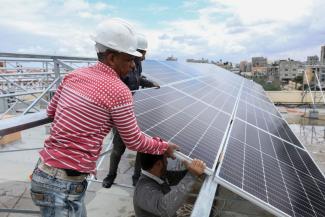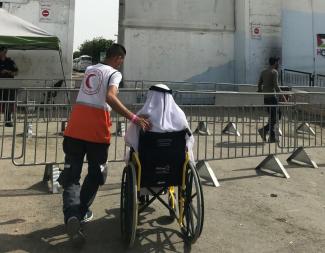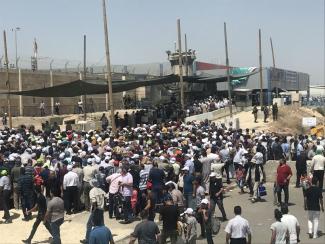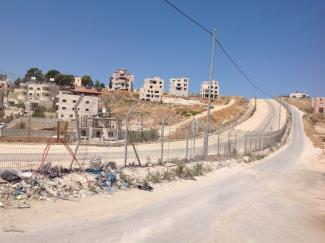For the past decade, the Gaza Strip has suffered from a chronic electricity deficit that has undermined already fragile living conditions. The situation deteriorated further after April 2017 due to disputes between the de facto authorities in Gaza and the West Bank-based Palestinian Authority (PA), which has been ongoing since the takeover of Gaza by Hamas in 2007. The failure to resolve a longstanding dispute between the two Palestinian authorities on issues related to tax exemption for fuel and revenue collection from electricity consumers resulted in the PA reducing payments for electricity in Gaza. Compounded by a halt in the electricity supply from Egypt due to malfunctioning and inability to repair the feeder lines, this triggered electricity blackouts of 20-22 hours a day. The power shortages had a severe impact on essential services such as health, water and sanitation services, and undermined Gaza’s fragile economy, particularly the manufacturing and agriculture sectors. During this period, the UN coordinated the delivery of donor-funded emergency fuel for generators to ensure the operation of some 250 critical health and WASH facilities.
The Monthly Humanitarian Bulletin | June 2019
In this document
The informal ceasefire understanding which concluded the escalation of hostilities in early May is still largely holding. June witnessed some easing of restrictions – the extension of the fishing zone, allocation of more business permits, disbursement of some of the Qatari-funded aid – which go some way to alleviating the humanitarian situation in Gaza.
As in previous years, UNOCHA and humanitarian partners monitored the checkpoints controlling access into East Jerusalem and Hebron during the holy month of Ramadan (5 May- 4 June 2019) to identify assess ease of access for Friday prayers, identify potential protection risks and possible mitigation measures for the multitudes seeks to cross the checkpoints. Particular attention is given to the most vulnerable amongst those seeking access including children, pregnant women, the disabled, and the elderly. This monitoring also informs UNOCHA’s analysis of broader access trends. On the four Fridays of Ramadan 2019, monitoring teams comprising staff members from UNOCHA, the Ecumenical Accompaniment Programme in Palestine and Israel (EAPPI) and the United Nations’ Office for Human Rights (OHCHR) observed access at permitted entry points into Jerusalem (Qalandiya, Gilo/Bethlehem and Zaytoun) and access into the Old City of Jerusalem. In addition, monitoring teams were stationed at the entrance of the Al-Ibrahimi Mosque in the H2 area of Hebron.
Houses to be demolished in Sur Bahir because of proximity to the Barrier: Sur Bahir (pop. 24,000) is a Palestinian neighbourhood in the south east of Jerusalem. Most of Sur Bahir is located within the unilaterally-annexed East Jerusalem municipal area, but the community reports that they own some 4,000 dunums of land in Area A and B and C, as designated under the Oslo Accords. Uniquely, the Barrier has been routed around Sur Bahir so that parts of Area A, B and C fall on the ‘Jerusalem’ side. The residents’ local committee estimates that some 6,000 people, or a quarter of the population, currently live in these Oslo-defined areas. Despite this, these areas have not been incorporated within the municipal boundary, although they are now physically separated from the remainder of the West Bank. In practice, the Palestinian Authority (PA) is unable to access or deliver services to Area A and B in Sur Bahir, although they still issue building permits in these areas, as they have been authorized to do under the Oslo Accords.













